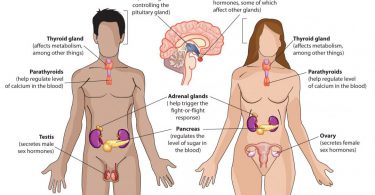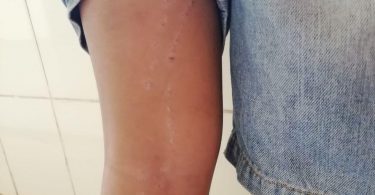
Urethral Stricture Disease: Causes, Symptoms, Diagnosis & Treatment with homeopathic medicine
Abstract:- Urethra is a thin fibro-muscular tube that connect with lower opening of the bladder to the external urethral meatus for removal of the urine from the body. Urethral stricture is abnormal temporally or permanent narrowing of the lumen of urethra characterized by the difficult micturition, slow or decreased urine stream, spraying of urine stream. Urethral stricture is a commonest genitor- urinary disorder of the elderly patient, Classical method of Homoeopathy is very effective in treating of urethral stricture, in relieving discomfort and quick recovery and free for painful surgeries.

Introduction:- Urethra’s main job in males and females is to pass urine outside of the body. Urethra has an important role of ejaculation in men. When injury occurs in this tube due to infection or trauma resulting slows the flow of urine in the urethra, it is called a urethral stricture. Urethral stricture is most common in male; many people feel pain with a urethral stricture.
The bladder empties through the urethra and out of the body (called micturition). Female urethra is much shorter than the males’ urethra.
Incidence:- Urethral stricture is a most common disease in men with an associated prevalence of 23-625 per 100,000 males, which is mostly seen in older person. Urethra stricture mostly seen in bulbar part of urethra as a result of the S shape of this segment which slows down the flow of urine, and the presence of abundant periurethral glands which may be infected as a result of this slowed flow. In the past urethral stricture is caused by the gonococcal urethritis.

Clinical types of the urethral stricture:
- Traumatic urethral stricture:
• Pelvic fracture
• Passage of renal stone
• Prolong labor
• Saddle injury - Infectious / Inflammatory urethral stricture:
• Gonorrhea
• Sclerosis - Latrogenic:
• Catheterization
• Prostatectomy
• Repair of hypospadias
• Instrumental (cystoscopy)
• Circumcision - Congenital
• Pin hole meatus
• Posterior urethral valves
Pathophysiology

CLINICAL FEATURES: Sign and Symptoms
• Difficulty in micturition.
• Patient has to stain to pass urine.
• Most common feature of Urethral stricture is, more he strain, more urine passes.
• Urine stream becomes narrower, and sprayed.
• Dribbling, after urination.
• Increase frequency of micturition due to incomplete emptying of bladder.
• Urethral discharge mostly seen in morning.
• Occasional passes of desquamated epithelium in urine.
Complication:-
• Retention of urine.
• Cystitis.
• Bilateral hyronephrosis.
Diagnosis of Urethral Stricture:-
The diagnosis of urethral stricture is based on physical symptoms, urine flow examination, medical history and medication. Physical examination as stricture is palpable mass in urethral floor.
- Urethroscopy:- Imaging tests shows size, position dilatability.
- Urethrography: – To assess the length of stricture.
- Uroflow:-Urine flow rate helps determine whether there may be a blockage due to a stricture.
- Retrograde Urethrogram:- After a stricture is diagnosed, the length and degree of narrowing can be evaluated with a retrograde urethrogram.
Management & treatment:-
• Catheterization.
• Dilation.
• Urethroplasty.
• Endoscopic urethrotomy.
• Implanted stent or permanent catheter.
Homoeopathic treatment:-
A. Clemitis: – Tingling in urethra lasting some time after urinating, Frequent , scanty urination, burning at orifice. Interrupted flow, Urethra feels constricted Urine emitted drop by drop. Inability to pass all the urine; dribbling after urinating. Pain worse at night, pain along with spermatic cord. Commencing stricture
B. Thuja Occientalis: – Forked, slow, weak, thin urine stream, Retarted, must wait for urination dribbling of urine, after urinating. Unsatisfactory urination, Feeling urine remained in urethra. Involuntary urination in old people. Retarded, must wait for urine to start; press must; a long time before he can begin.
C. Silica: – Burning and soreness of genitalia, Chronic UTI with thick discharge, involuntary discharge when straining at stool. Icy cold and sweaty feet. Yielding, faint- hearted, anxious. Nervous and excitable. Intolerance of alcohol.
D. Chimaphila: – When there is Straining to Pass Urine Chimaphila is of great help for urethral stricture patients who have to apply a lot of strain to pass urine. In spite of efforts, the urine passed is very less in quantity. One characteristic feature unique for the use of this natural medicine is a specific position in which the patient is able to empty the bladder. The position is standing with feet set wide apart and body stooped forward. So, it’s only by standing with feet wide apart and inclining the body in a forward position that a person is able to pass urine. When such peculiar symptoms come to light, the selection of the correct medicine becomes easy and excellent results follow.
E. Arnica Montana: – This remedy is among the top natural medicines for its universal curing action in trauma and injury cases. Arnica can help all those cases of Urethral Stricture that are a result of an injury. Injuries basically caused by blunt objects, a blow or a fall are covered by this medicine. The patient needing Arnica usually complains of sore and bruised pain in urethra while urinating or raw, sore felling in the morning; worse to touch Coldness of the body.
F. Thiosinaminum:- To Dissolve Scars in Urethral Stricture, Thiosinaminum is known for its ability to dissolve scars formed anywhere in the body. Thiosinaminum can work wonders in Urethral Stricture cases where the cicatricial tissue is formed in urethra due to any cause. The resolving power of this natural remedy in scar cases cannot be matched by any other medicine. The scar will get soft followed by complete disappearance with the use of Thiosinaminum. Conium: For Intermittent Urine Stream
G. Conium:- is a natural remedy that can help patients of Urethral Stricture where the main trouble is the intermittent stream of urine. It takes a lot of time to complete the act of urination. The time taken is due to intermittent urine flow. The urine starts to flow and then stops and this process of starting and stopping is repeated several times to completely pass the urine out.
H. Cantheris: – Urine passing out in Drops with Burning Pain, Cantharis is a very well known and widely used natural medicine for various kinds of urinary troubles. Cantharis is very beneficial in Urethral Stricture cases when the foremost complaint is the passage of a few drops of urine through the urge to pass urine is almost constantly present. The urine is passed with much violent, burning pains. The burning pains start before urination, remain while passing urine and continue thereafter. Cantharis is also the best remedy for Urinary Tract Infection due to Urethral Stricture with difficult, painful, burning and almost scalding urine.
I. Oleum Santali:- Oleum Santali proves to be a very effective natural treatment for Urethral Strictures. Oleum Santali is the medicine to be used when the urine stream is very slow and scanty.
J. Sulph Iod:- It is the ideal remedy when the urine passes drop by drop and there is a frequent urge to pass urine. The frequency to pass urine is mostly worse at night
References:-
• Davidson’s Text book of Medicine, 19th edition.
• Boericke, William. Pocket Manual of Homoeopathic Materia Medica and Repertory. B. Jain Publishers New Delhi, 2007.
• API Text Book Of Medicine Of Edition 2012 Published by The association of physician of India.
• Hahnemann Samuel. Organon of medicine. Translated by William Boericke. B. Jain Publishers Pvt. Ltd., New Delhi, Reprint Edition 2002.
• Kent James Tyler. Repertory Reprint. B. Jain Publishers Pvt. Ltd., New Delhi, 2004.
• Urethral stricture disease; urology care founation
• Urethral stricture: What causes it? – mayoclinic.com”. Mayoclinic.com. Archived from the original on November 26, 2007.
• Mathur R, Aggarwal G, Satsangi B, et al. Comprehensive analysis of etiology on the prognosis of urethral strictures.
• Ranjan P, Ansari MS. Singh M.et al. Post-traumatic urethral strictures in children: what have we learned over the years?
About Author:
Assistant Prof.(Dr.) Ishita Singh
B.H.M.S, M.D (Hom) Practice of Medicine
Assistant Professor Dept.of FMT at State Ghazipur Homoeopathic Medical College and Hospital, Ghazipur, U.P (233001)
Mob-09179169553, [email protected]





